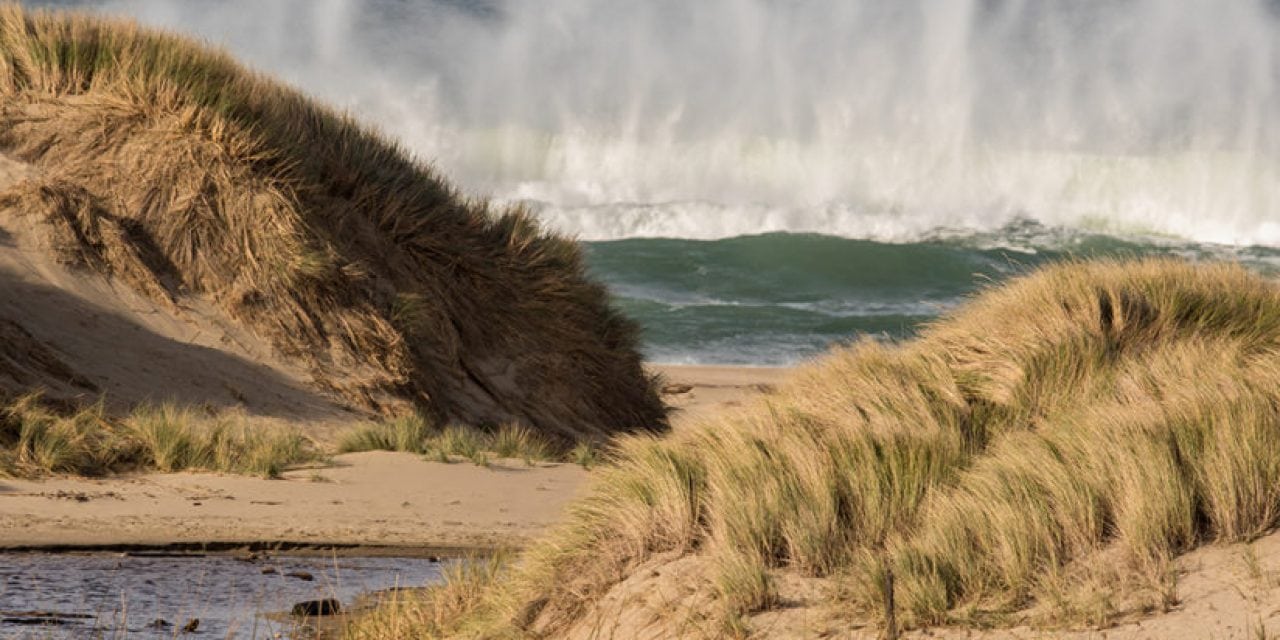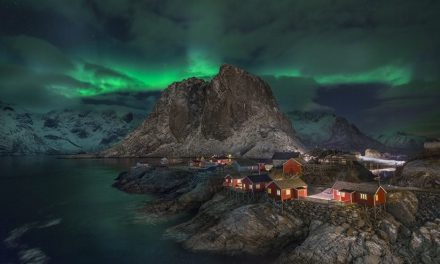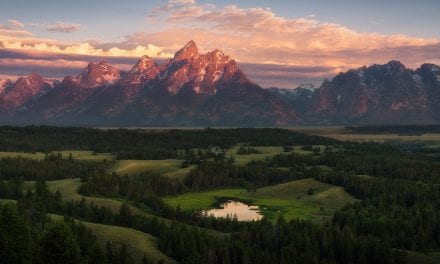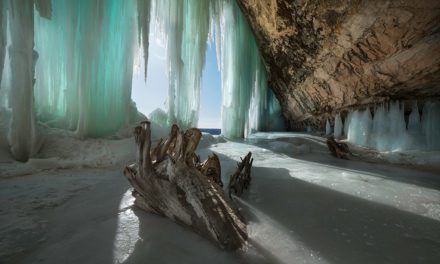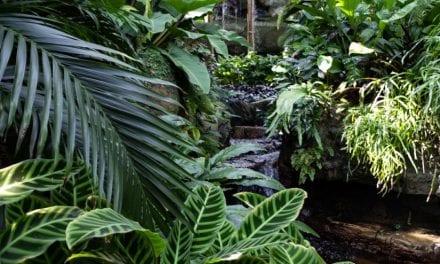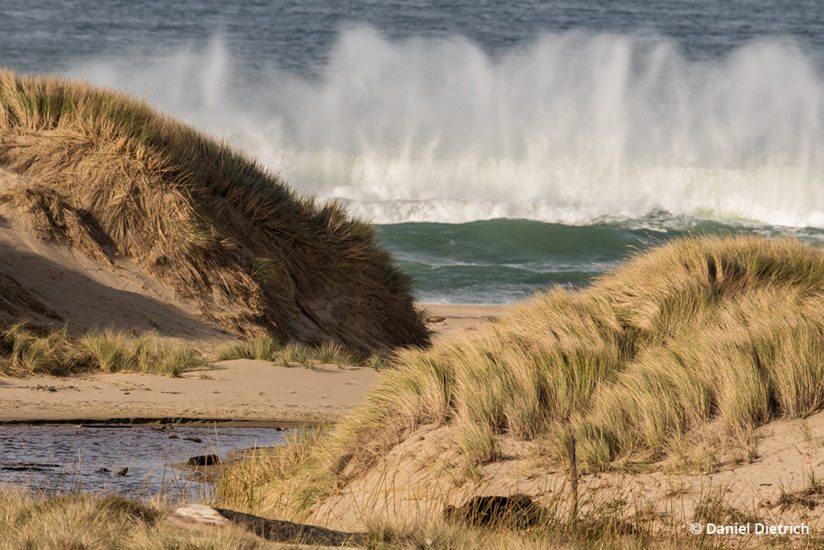
In 1579, English sea captain Sir Francis Drake’s ship was in need of major repairs. He steered the tattered Golden Hind into Drakes Bay on the Point Reyes peninsula. After making the necessary repairs to his ship, he nailed a brass plate to a tree claiming the land for the queen and sailed away. Today, that land represents one of the most wildlife-rich areas in the country.
Jutting 10 miles out into the Pacific Ocean, Point Reyes National Seashore sits just 30 miles north of the bustling activity of San Francisco. Yet when you sit on the cliffs of Drakes Bay, you feel like you have the place to yourself.
I first discovered this national treasure nearly 25 years ago. Needing a reprieve from the grind of my job in Silicon Valley, I spent the day hiking a popular trail at the north end of the park. Driving home, I remember saying to myself, “How do I get to live in that magical place?” The long commute made that dream impossible back then, but dreams do come true. Today I call Point Reyes home as I continue my career as a full-time wildlife photographer, writer and guide.
I moved here for one reason: the wildlife. Point Reyes boasts one of the greatest animal diversities of any national park in the country. Over 50 percent of North America’s bird species and over 80 species of mammals have been documented here. That is a tremendous amount of wildlife assembled in 72,000 acres of land. As you pack your gear, don’t forget your landscape lens. There is a magnificent scene around every curve in the road.
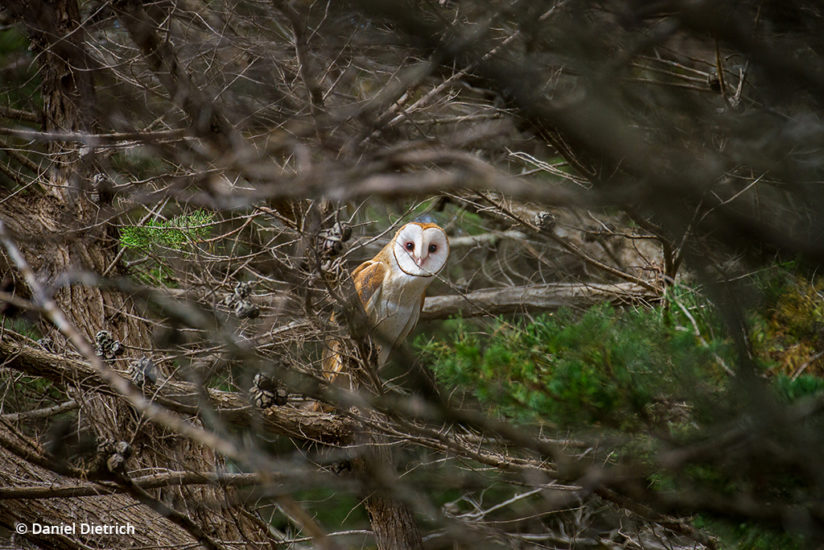
Wildlife At Point Reyes National Seashore
If you want to visit Point Reyes for a wildlife photography vacation, what animals will you most likely be able to photograph? Let’s break it down.
Tule Elks
Tule elk are native and endemic to California. Nowhere else in the world will you find these magnificent creatures. Approximately 500,000 roamed California before European settlers arrived. By the 1870s, they were all but gone. They hadn’t been seen in several years before a land owner in central California found an extremely small herd on his property. Thankfully, protections were put in place and today California has around 5,000 roaming the state.
Where To Find Them. There are several places you can find and photograph tule elk in the park, the best being at Pierce Point Ranch in the far north section of the park. As you enter the Tule Elk Preserve, keep your eyes on both sides of the road. The elk often graze in the open pastures as you approach the ranch.
For a photographic experience with the elk on foot, from Pierce Point Ranch hike the Tomales Point Trail, where you will find spectacular views of the Pacific Ocean and Tomales Bay. Somewhere along the hike, you will run into the elk.
Best Times. All year, with the rut happening from September to December.
Elephant Seals
Northern elephant seals were hunted to near extinction by the late 1800s. History claims that a very small population was found in the 1880s, and the group was quickly shot by scientists to collect more information about the species. Luckily, protections were put in place, and the species has rebounded to a now-estimated 150,000 individuals. Point Reyes National Seashore is one of the only places in the world where you can see elephant seals give birth.
Where To Find Them. The best place to photograph the elephant seals is the Elephant Seal Overlook at Chimney Rock. A short, flat walk from the parking lot takes you to a cliff overlooking the main colony. Here you can shoot the males battling for breeding rights, females giving birth to their 80-pound pups, and hundreds of pups taking their first swim after all the adults have left for their migration.
Drakes Beach is another good location to find them. This year nearly a dozen individuals called this sanctuary home. Males fought daily over the small group of females present on the beach. Three pups were born here this year as well.
Best Times. Males arrive in December and females in January. By March only the pups remain. Adults return in July to molt and leave again in August.
Gray Whales
One of the star attractions of the park is the gray whale. Reaching nearly 50 feet in length and weighing in around 35 tons, these massive sea animals have one of the most epic migrations on the planet, swimming over 10,000 miles round trip from Alaska to their breeding grounds in Mexico. They round the Point Reyes peninsula and come within meters of our shores.
Where To Find Them. The lighthouse is the best place to photograph gray whales. Walk the 0.4-mile paved trail from the parking lot to the viewing platform where whales are easily spotted. If you are feeling fit, take the 300 stairs down to the lighthouse itself. From there, you are nearly on top of the gray whales that hug the coast as they migrate past.
Best Times. The southern migration is best between November and February. The northern migration is March and April.
Bobcats
My personal favorite animal to photograph in the park is the bobcat. Nowhere else in the country do you have the same ability to photograph this incredible animal. Shy and elusive, yet confident and powerful, bobcats inhabit all corners of the park. No studies have been done on their populations here, but on any given day, with some patience, you have the opportunity to find North America’s wildcat. With my guiding business, we see bobcats about 75 percent of the time we are in the park.
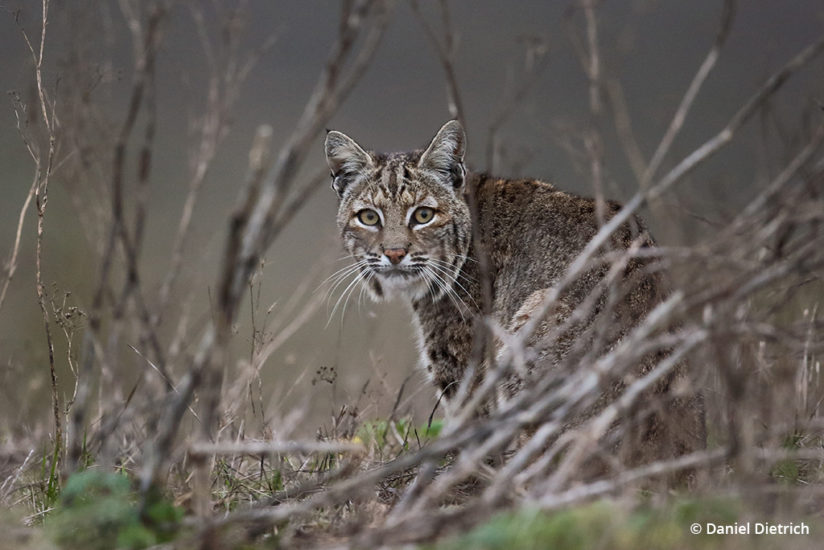
Where To Find Them. The short answer is anywhere. The challenge is spotting them. They have perfect camouflage and are wary of people. The best way to find them is with binoculars. Then sort out how to best position yourself for your photography.
As you drive or hike through the park, stop at any point where you have wide vistas. While bobcats are wary of people, they are most wary when they are approached by cars or by hikers. From a distance they move about the fields and on the trails with confidence. Scan the hillsides and the trail in front of you with your binoculars. Find a sit spot on top of a hill and set up your scope. Be patient and be persistent.
The hiking trails on which I have found the most bobcats are Bear Valley Trail, Abbotts Lagoon and Tomales Point Trail. I have also seen bobcats on the Earthquake Trail and Muddy Hollow Trail.
Driving to the lighthouse and to Pierce Point Ranch, use the pull-outs to scan the open pastures. Bobcats often hunt these gopher rich fields.
Best Times. All year.
Coyotes
Coyotes are one of the most heavily persecuted animals in the country. It is estimated that over 500,000 coyotes are killed each year, yet their resilience is incredible. Despite this persecution, there are more coyotes in America today than there have ever been in our history. Coyotes have lived on this land for more than a million years, and Point Reyes is a native home for them.
Coyotes hunt the open fields of Point Reyes every day. While they are extremely timid in most of the country where they have no protection, we are fortunate to have encounters with these beautiful animals on a daily basis. Their main prey is rodents. It is an incredibly exciting experience training your lens on a coyote as it creeps up on an unsuspecting gopher. When the moment is right, they leap into the air, smashing nose first into the ground under the weight of their entire body. After the crushing blow, the coyote snatches the gopher from its hole and enjoys a quick meal.
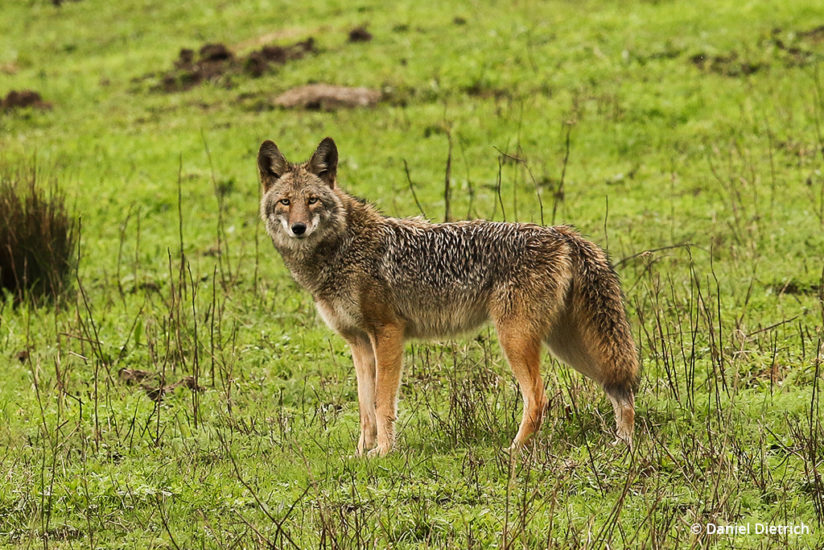
Where To Find Them. It is not hard to find a coyote in Point Reyes. You can find them hiking any of the many trails in the park and on all stretches of road, but put some effort into it. While you are likely to see them while driving, be sure to stop, get out and scan. The open fields are best viewed at elevation. Find them crossing the fields, then drive yourself to a position that gives you the best opportunity to photograph them.
Best Times. All year.
Birds
Point Reyes National Seashore is a birder’s paradise. Over 50 percent of North America’s birds have been documented here. Ten different owls, including the endangered northern spotted owl, and 20 different birds of prey, including four falcons, a dozen hawks and even golden and bald eagles have made the list. And there are enough ducks, loons, herons and shorebirds to make your head spin.
Where To Find Them. Bear Valley is a hotspot for warblers, woodpeckers, hummingbirds and owls.
Giacomini Wetlands was formerly a cattle pasture, and in 2008 the land was returned to wetlands, and the birds followed. Many species of ducks, rails, herons and egrets can be found here, as well as many birds of prey such as white-tailed kites and harriers. It is also the spot where I saw my first bald eagle in Point Reyes.
With beach, marshes and ponds, Limantour Beach is arguably the best birding spot in Point Reyes and home to an incredibly diverse number of bird species. It is also a good place to find the threatened snowy plover.
A recent hike to Abbotts Lagoon with a safari guest of mine netted over 20 species of birds in a 1.5-hour walk, including a peregrine falcon knocking a cormorant out of the sky. Two connecting lagoons ending at the ocean provide incredible habitat for a variety of birds. It is very common to see river otters in this area as well.
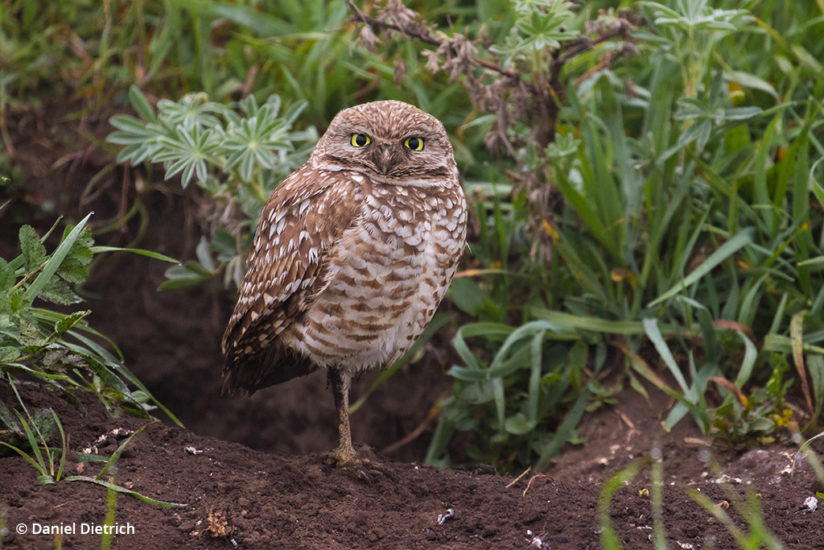
The trees at the lighthouse provide refuge for many migrating species. In high winds and poor visibility, the birds welcome the sight of the cypress trees protecting the walk to the lighthouse. From a platform you can scan the rocks for nesting common murres, brown pelicans, red-tailed hawks and turkey vultures. A pair of peregrine falcons nest near the lighthouse and are seen here regularly.
Best Times. All year, with the peak fall migration in late September and spring migration in April.
Other Wildlife
There is so much other wildlife in this amazing place. Badgers, river otters, sea lions, harbor seals, long tailed weasels … the list goes on and on. I invite you to contact me through my website to discuss any particular animals you hope to find while visiting here.
Tips For Photographing Wildlife At Point Reyes National Seashore
- Practice strong ethics. When shooting animals anywhere, put the animal’s safety in front of your desire to get the shot. Never change the behavior of an animal. If it moves away from you, you are too close. Never bait an animal for a shot. Never approach a nesting bird. Do not use calls to bring animals in. Learn more about wildlife photography ethics and best practices.
- Use a long lens. We can’t all afford a 600mm lens, but we should always use the longest lens possible to not disturb wildlife. Teleconverters are a very economical way to increase the reach of your lens.
- Capturing animal behavior is a skill learned through patience. When you find a subject, stay with it. If a coyote is crossing a field, stay on it. If an owl is sitting on a fence post, stay on it. The longer you wait (and are ready), the better the chance of something extraordinary happening.
- Use a blind. There are many affordable professional blinds available. Consider one if shooting for longer periods of time to provide comfort for your subject or to provide the opportunity to shoot in more inclement weather. I often use a single sheet of camouflage mounted to stakes that I can stick in the ground and sit behind.
- Get out early and stay out late. Some of the best light can be pre-sunrise and after the sun sets. Many animals are more active at these times, especially owls, badgers and bobcats. When the sun goes down, it doesn’t mark the end of the day for me. It represents the start of a short window of epic wildlife photography opportunity.
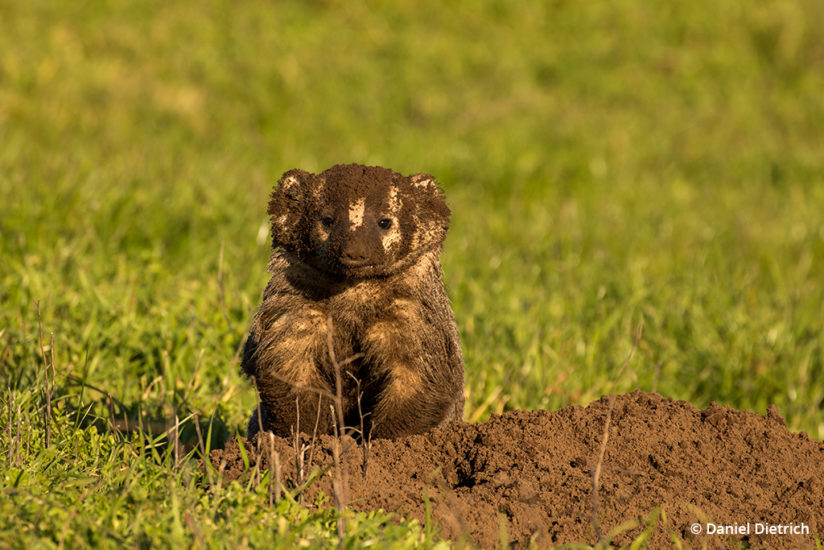
When To Find Popular Wildlife At Point Reyes National Seashore
Whales Nov. – April
Elephant Seals Dec. – March & July
Bobcats All Year
Coyote All Year
Burrowing Owls Dec. – March
Ferruginous Hawks Dec. – Feb
Badgers All Year
Daniel Dietrich is a full-time wildlife photographer living in Point Reyes, California. He owns and operates Point Reyes Safaris, a wildlife photography tour company. Visit his website at danieldietrichphotography.com.
The post Point Reyes National Seashore appeared first on Outdoor Photographer.

